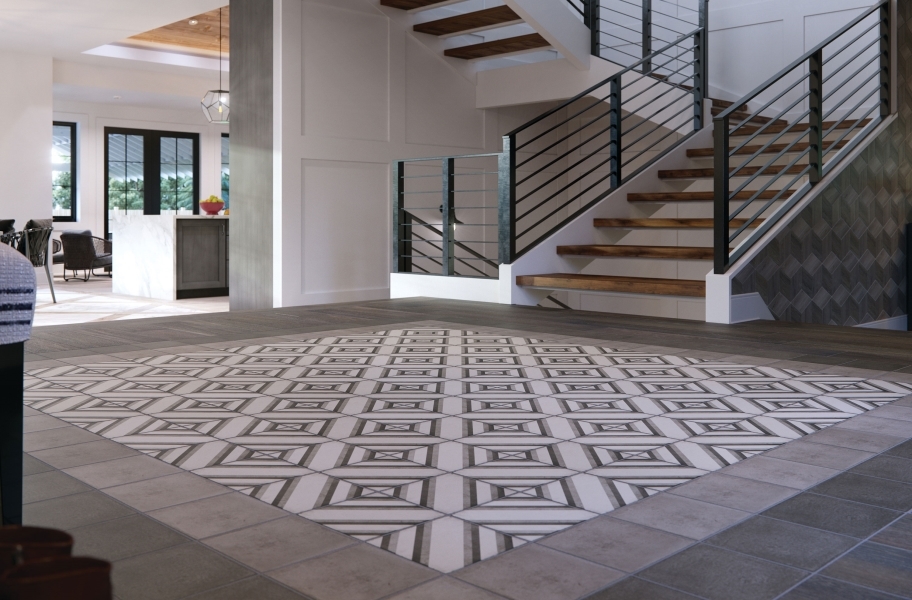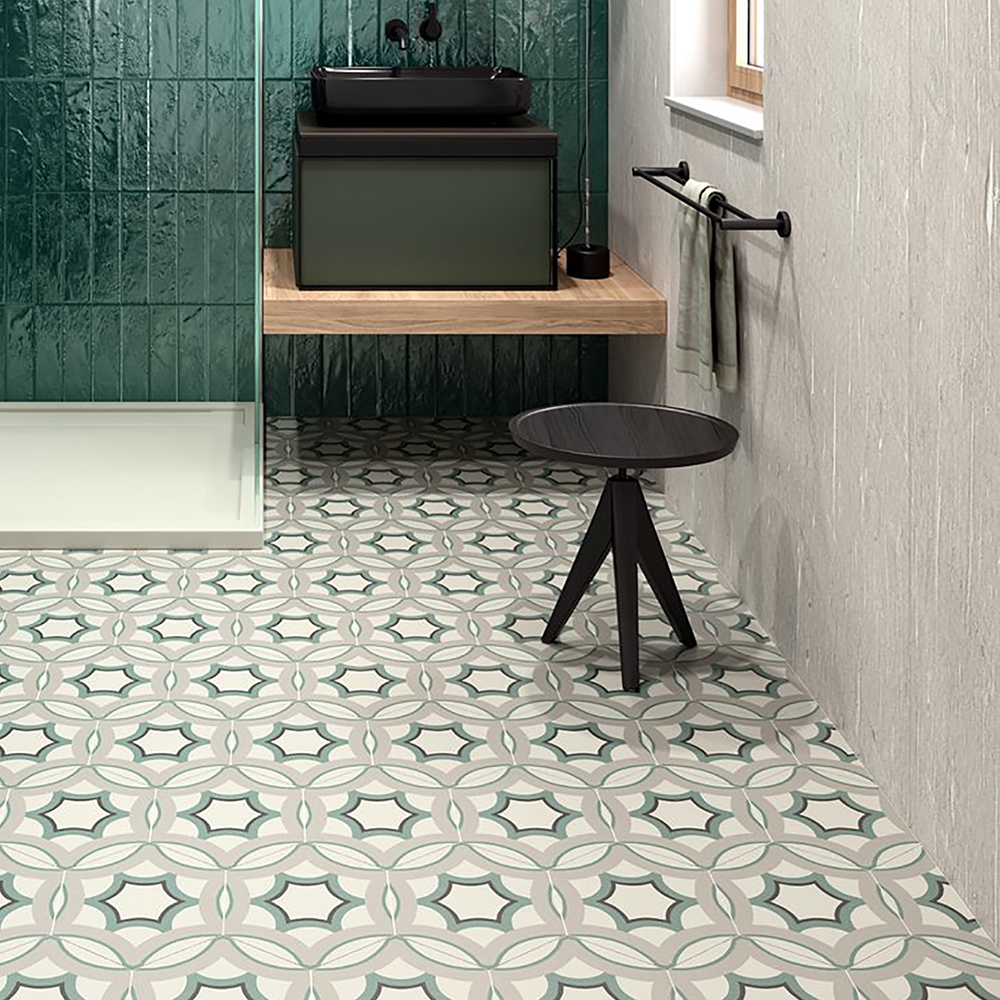Welcome to the ultimate guide on deco tile flooring! If you’re considering upgrading your floors or simply curious about the possibilities of deco tile, you’ve come to the right place. My name is [Your Name], and I’ve spent years exploring various flooring options, but there’s something uniquely captivating about deco tile flooring that truly stands out. In this article, we’ll dive deep into what deco tile flooring is, its benefits, design options, and why it might be the perfect choice for your home.
What is Deco Tile Flooring?
Deco tile flooring, often referred to as decorative tile flooring, combines artistic elements and functional materials, creating stunning visuals while maintaining practicality. These tiles are typically made from ceramic, porcelain, or natural stone, featuring vibrant patterns and designs that can transform any space into a work of art.
The Origins of Deco Tile
Deco tile first gained popularity during the Art Deco period in the 1920s. This movement emphasized bold geometric shapes, vibrant colors, and intricate designs. Today, deco tile flooring pays homage to this iconic era while incorporating modern technology and trends.

Benefits of Deco Tile Flooring
There are numerous advantages to choosing deco tile flooring. Here are some key benefits:

- Aesthetic Appeal: Deco tiles bring a splash of color and personality to any room.
- Durability: Made from robust materials, these tiles can withstand heavy foot traffic.
- Easy Maintenance: Most tiles are easy to clean and resistant to stains.
- Versatility: Deco tiles can be used in various spaces, from bathrooms to kitchens and living areas.
- Eco-Friendly Options: Many manufacturers are now offering sustainably sourced tiles.
Types of Deco Tile Flooring
:fill(white)/https://www.toppstiles.co.uk/static/uploads/2021/02/Graphic-Lines-Mobile-Header.jpg)
When considering deco tile flooring, you’ll find multiple varieties to choose from:
Ceramic Deco Tiles
Ceramic tiles are widely regarded for their versatility and affordability. They come in a range of colors and patterns, making them a popular choice for homeowners. Here’s a comparative table showing their characteristics:

| Features | Ceramic Deco Tiles | Porcelain Deco Tiles |
|---|---|---|
| Durability | Moderate | High |
| Water Resistance | Good | Excellent |
| Cost | Low to Moderate | Moderate to High |
| Design Variety | High | Medium |
Porcelain Deco Tiles
Porcelain tiles are denser and more durable than ceramic, making them ideal for high-traffic areas. They also have a lower water absorption rate, making them suitable for bathrooms and kitchens.

Natural Stone Deco Tiles
Natural stone tiles, such as marble and granite, offer a luxurious feel. They provide unique patterns and textures, but they do require more maintenance compared to ceramic and porcelain.
Popular Design Patterns
Deco tile flooring comes in numerous patterns. Here are some trends I have noticed:

- Geometric Patterns: Clean lines and shapes create a modern look.
- Floral Designs: Soft, organic shapes bring a touch of nature indoors.
- Moroccan Influence: Intricate, vibrant patterns that offer a bohemian vibe.
Installation Process of Deco Tile Flooring
Installing deco tile flooring can be a rewarding DIY project or can be handled by a professional. Here’s a typical process breakdown if you decide to take matters into your own hands:
- Preparation: Ensure your subfloor is clean, dry, and level.
- Layout: Plan the tile layout to minimize cuts.
- Adhesive Application: Apply thinset mortar on the subfloor.
- Tile Placement: Lay down the tiles, pressing them firmly into the adhesive.
- Grouting: Once the adhesive sets, apply grout between the tiles.
- Sealing: Seal the grout lines to protect against moisture.
Tools Needed
Here’s a quick list of tools you might need for installation:
- Tile cutter
- Notched trowel
- Grout float
- Rubber mallet
- Bucket for mixing
Maintenance Tips for Deco Tile Flooring
Proper maintenance is essential to prolong the life of your deco tile flooring. Here are some tips based on my personal experience:
- Regular Cleaning: Sweep or vacuum regularly to remove dirt and debris.
- Use Mild Cleaners: Avoid harsh chemicals; a simple soap and water mix is best.
- Seal Grout Lines: Reseal grout every couple of years to prevent staining.
Common Problems and Solutions
Problem 1: Chipped Tiles
If a tile chips, you can often replace it without needing to redo the entire area. Keep extra tiles from your original installation for easy repairs.
Problem 2: Stained Grout
For stained grout, try using a baking soda and vinegar paste for deep cleaning or consider a grout colorant if the stains persist.
Deco Tile Flooring in Different Areas of Your Home
Deco tile flooring can be utilized in various spaces throughout your home. Here’s a breakdown of where they can shine:
Kitchens
Kitchen flooring requires durability and easy maintenance. Deco tile can incorporate fun patterns that fit your kitchen aesthetics while standing up to spills.
Bathrooms
In bathrooms, where water resistance is key, porcelain deco tiles are an excellent choice, and their designs can enhance your spa-like experience.
Living Areas
In living rooms, deco tiles can create a statement floor or complement existing décor while providing durability for your family’s activities.
Cost Analysis of Deco Tile Flooring
Understanding the cost is crucial when considering any renovation project. The total cost of installing deco tile flooring can vary based on material, labor, and area size. Here’s a breakdown:
| Material | Average Cost per Square Foot |
|---|---|
| Ceramic Tiles | $1 – $5 |
| Porcelain Tiles | $3 – $10 |
| Natural Stone Tiles | $5 – $20 |
Pros and Cons of Deco Tile Flooring
Deco tile flooring has both advantages and disadvantages that are worth considering:
Pros
- Highly customizable with endless design options.
- Durable and long-lasting if properly maintained.
- Can increase the aesthetic value of your home.
Cons
- Can be more expensive than basic flooring options.
- Installation can be challenging for DIY beginners.
- Some types can be slippery when wet.
Frequently Asked Questions About Deco Tile Flooring
What is the difference between ceramic and porcelain tiles?
Ceramic tiles are made from clay and are glazed for color and design, while porcelain tiles are denser and less porous, making them more water-resistant and durable.
Can I install deco tiles myself?
Yes, with the right tools and patience, many homeowners can install deco tiles on their own. However, consider hiring a professional if you’re unsure.
Are deco tiles suitable for outdoor use?
Some porcelain and natural stone tiles are suitable for outdoor use, but it’s important to choose frost-resistant options if you live in colder climates.
Conclusion
Deco tile flooring is not just a functional choice but also a way to express your personality and style in your home. Whether you opt for the charm of ceramic, the strength of porcelain, or the luxurious feel of natural stone, you can create a stunning flooring solution that will stand the test of time. Remember, the key is to choose a design that resonates with you and enhances your space. Happy decorating!
Have any other questions or need more personalized advice? Feel free to leave a comment below!